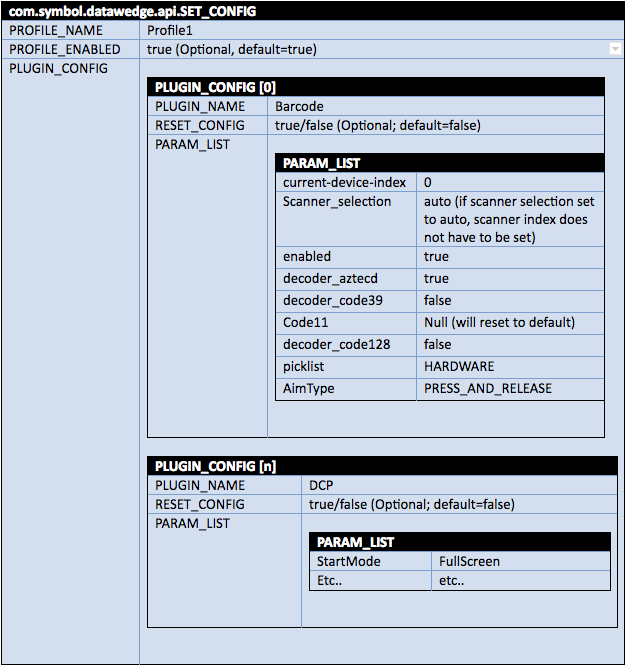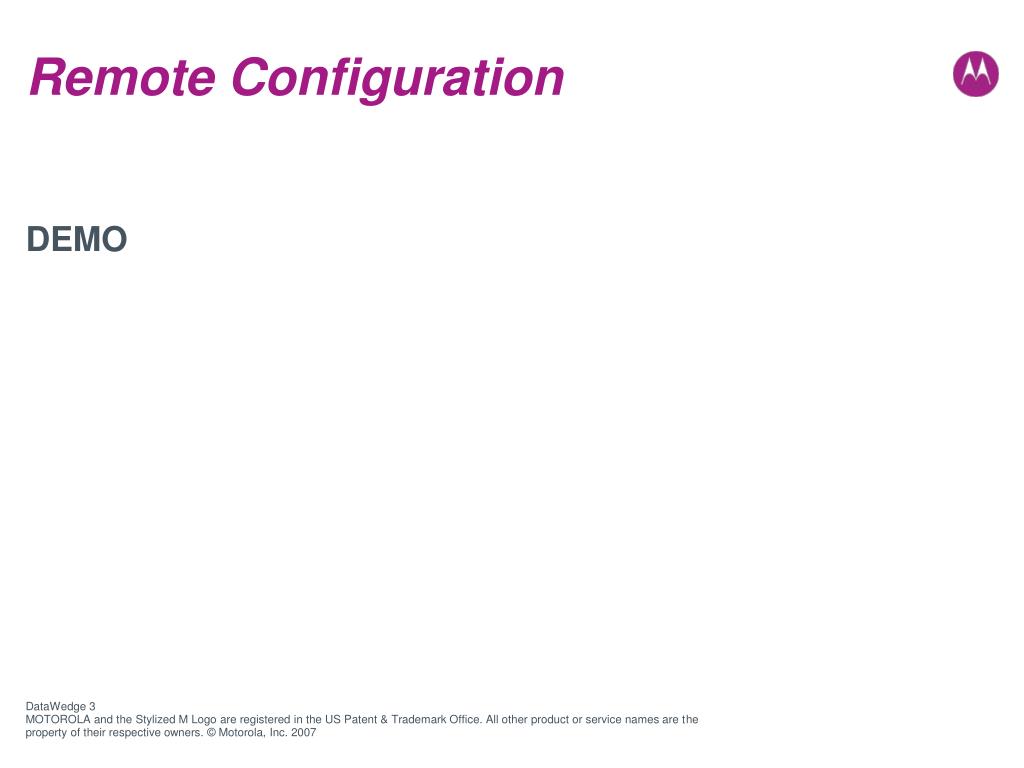


- #Datawedge configuration how to
- #Datawedge configuration update
- #Datawedge configuration full
- #Datawedge configuration android
There may have been a better way to do this but invokeMethod can only take a single argument type so to exchange two strings I converted them to a stringified JSON object. The DataWedge API contains APIs which take a range of parameters, from simple Strings to complex nested Bundle structures. The MethodChannel is used to send instructions to DataWedge. Private fun createDataWedgeBroadcastReceiver( events : EventSink ?): BroadcastReceiver ? User Interface (Dart) code to send commands to DataWedge

#Datawedge configuration update
Set up the EventChannel and declare an onEvent listener to update the UI when a barcode is scanned. This seemed the easiest way to pass an object over the EventChannel rather than try to get Dart to understand my Kotlin class. Scanned data will be received from the native (Kotlin) layer over an EventChannel as a stringified JSON object. I personally found it challenging to define my UI in Flutter - respect to those developers who find this easy User Interface (Dart) code to receive data (e.g. GET_VERSION.Īs can be seen from the picture, the last scanned barcode is displayed and a scan can be initiated with the blue SCAN button. This demo only receives scans but this channel could also be used to parse return values from the asynchronous DataWedge APIs, e.g.
#Datawedge configuration android
Optionally: Configure the Flutter SDK in Android Studio and run your application from there The process is fairly straight forward and there are abundant resources out there to help you get Flutter configured on your system You need to have Flutter installed in order to run this sample.
#Datawedge configuration full
This project does not demonstrate the full capabilities of DataWedge through Flutter, see 'not covered by this sample', below. This project will use DataWedge to capture data aswell as the DataWedge API to configure a profile and control the scanner with a button on the UI. For an overview of DataWedge, please refer to the DataWedge Techdocs page.
#Datawedge configuration how to
This demo application shows how to interface to Zebra's DataWedge service from a Flutter applicationįor expediency, this article assumes familiarity with Zebra's DataWedge tool as well as the DataWedge profile mechanism. That sample is at but Zebra's recommended approach is to use DataWedge rather than the EMDK for scanner integration and I noticed a number of people asking about non-Zebra device compatibility, something that is more difficult to achieve with the EMDK. Until recently I had directed developers to a 3rd party flutter demo that shows how to wrap the EMDK (Zebra's Android scanner SDK). Over the past couple of years I have seen an increasing interest in developing Flutter apps for Zebra Android mobile devices. Please be aware that this application / sample is provided as-is for demonstration purposes without any guarantee of support DataWedge Flutter Demo


 0 kommentar(er)
0 kommentar(er)
